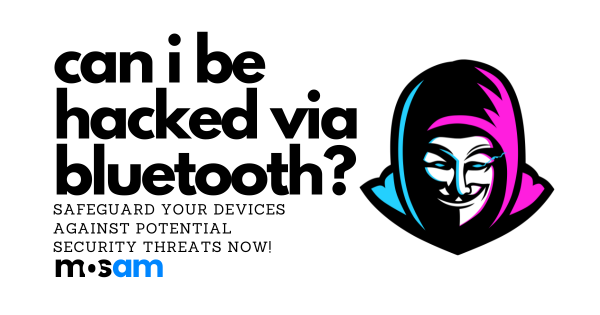Discover the risks: Can I Be Hacked Via Bluetooth? Safeguard your devices against potential security threats now!
In our increasingly connected world, Bluetooth technology has become an essential part of our daily lives. We use it for everything, from connecting our smartphones to wireless earbuds to syncing up our smart homes. However, as convenient as Bluetooth is, it also comes with its own set of security risks. In this blog, we’ll explore the potential dangers of Bluetooth attacks and learn how to protect ourselves from these threats.
What is a Bluetooth Attack?
A Bluetooth attack is a form of hacking technique that allows an attacker to gain unauthorized access to a device with an active Bluetooth connection.

These attacks exploit the vulnerabilities of Bluetooth technology, taking advantage of devices that are in discoverable mode, meaning they can be easily spotted by other nearby devices. Here are some common types of Bluetooth attacks:
- Bluesnarf Attack: This attack allows a hacker to access and steal data from the target device, such as contacts, messages, and files.
- Man-in-The Middle (MiTM) Attack: In this scenario, an attacker intercepts the communication between two devices, potentially gaining access to sensitive information.
- BlueJacking: BlueJacking is a more harmless form of Bluetooth attack, involving the sending of unsolicited messages to other Bluetooth-enabled devices.
- BlueSmacking (DoS Attack): This is a Denial of Service (DoS) attack that overwhelms the target device with Bluetooth requests, causing it to crash or become unresponsive.
- BluePrinting Attack: In this attack, a hacker gathers information about the target device’s Bluetooth connection for future exploitation.
- BlueBugging: Bluebugging is a severe form of Bluetooth attack, granting the hacker complete control over the target device. They can listen to calls, read messages, and modify device data.
The Importance of Bluetooth Security
Bluetooth technology is found in almost all Internet of Things (IoT) devices. As the number of cyberattacks continues to rise globally, it is crucial to prioritize the security of Bluetooth technology. Failure to do so can pose a significant global risk through vulnerable IoT devices and emerging threats.
How to Prevent Bluetooth Attacks?
Thankfully, there are several steps you can take to protect your devices from Bluetooth attacks:
- Turn off Bluetooth when not in use: The simplest and most effective way to prevent Bluetooth attacks is to turn off Bluetooth when you’re not actively using it. This prevents your device from being in discoverable mode.
- Update Device Software Frequently: Keeping your device’s software up to date is essential as manufacturers often release security patches to address vulnerabilities.
- Turn off Discoverable Mode: Avoid keeping your device in discoverable mode unless you specifically need to pair it with another device. This reduces the chances of your device being targeted.
- Use Anti-Virus Software: Just as you would protect your computer from malware, consider using anti-virus and anti-malware software on your mobile devices as well.
- Reject Unsolicited Messages: Be cautious about accepting or opening messages from unknown or unsolicited sources via Bluetooth.
- Monitor Data Usage: Keep an eye on your data usage. A sudden increase in data usage could indicate a potential Bluetooth attack.
In conclusion, while Bluetooth technology makes our lives more convenient, it also exposes us to potential security risks. By taking proactive steps to protect your devices, you can significantly reduce the chances of falling victim to Bluetooth attacks. Prioritizing Bluetooth security is crucial in our interconnected world, helping to safeguard our data and protect against emerging threats. Stay safe, and keep your Bluetooth technology secure!

